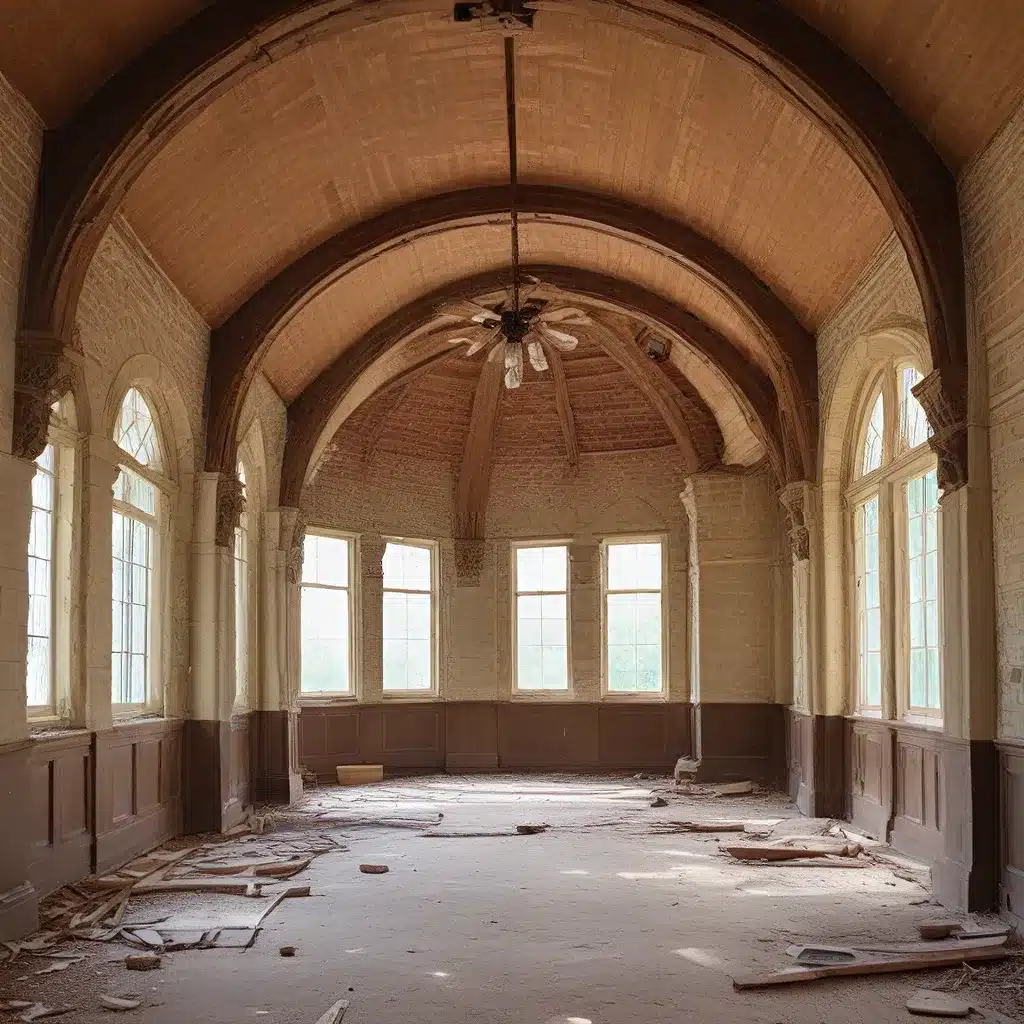
Unlocking the Potential of Old Structures
As a passionate advocate for renewable energy solutions, I’ve long been fascinated by the unique challenges and opportunities presented by historic preservation projects. These stately structures, often imbued with cultural significance and architectural grandeur, pose a fascinating conundrum when it comes to enhancing energy efficiency.
How do we balance the need to preserve the integrity and character of these historic buildings while simultaneously leveraging modern sustainable technologies? It’s a delicate dance, to be sure, but one that I believe is essential for creating a more environmentally conscious future.
Throughout my research, I’ve discovered a wealth of innovative approaches and best practices that can help historic preservation projects maximize their energy efficiency. From cutting-edge insulation techniques to integrated renewable energy systems, the possibilities are truly exciting.
The National Park Service has long been a leader in this domain, providing invaluable guidance and resources for historic site managers and preservation professionals. Their insights have been tremendously helpful in informing my understanding of this complex issue.
Embracing the Old, Empowering the New
One of the key principles I’ve learned is the importance of embracing the old while empowering the new. Historic preservation is not about clinging to the past, but rather about honoring it while simultaneously leveraging the best of modern sustainable technologies.
Take, for example, the challenge of improving insulation in a centuries-old building. Traditional materials like thick stone walls and wooden beams may have inherent thermal properties, but they can also be drafty and energy-inefficient. By carefully integrating high-performance insulation systems, we can dramatically enhance the building’s thermal performance without compromising its historic character.
The American Institute of Architects has highlighted numerous case studies where historic structures have been transformed into energy-efficient marvels, thanks to innovative insulation solutions that blend seamlessly with the original architecture.
Harnessing the Power of the Sun
Another area where historic preservation and renewable energy intersect is in the integration of solar power systems. While the idea of installing solar panels on a historic building may initially seem jarring, there are actually many creative ways to do so in a manner that respects the architectural integrity of the structure.
The National Park Service has championed the use of building-integrated photovoltaics (BIPV), which allow solar panels to be seamlessly incorporated into the roof or facade of a historic building. By carefully considering the placement, color, and design of these systems, we can harness the power of the sun while preserving the building’s aesthetic appeal.
Additionally, some historic sites have even repurposed existing architectural elements, such as carriage house roofs or outbuildings, to host standalone solar arrays. This not only maximizes energy generation but also minimizes the visual impact on the primary historic structure.
Embracing the Future, Honoring the Past
Of course, enhancing energy efficiency in historic preservation projects isn’t just about technical solutions. It’s also about cultivating a mindset that values sustainability and respects the inherent character of these irreplaceable buildings.
As I’ve delved deeper into this topic, I’ve been inspired by the dedication and creativity of preservation professionals who are reimagining the possibilities of historic structures. They understand that preserving the past doesn’t have to come at the expense of embracing the future.
In fact, many of them have found that by integrating sustainable technologies, they’re enhancing the long-term viability and attractiveness of these historic sites. Visitors are increasingly drawn to buildings that seamlessly blend the old and the new, showcasing the best of both worlds.
A Future-Focused Approach to Historic Preservation
As I reflect on my journey of exploring energy efficiency in historic preservation, I can’t help but be excited about the possibilities. By leveraging the latest renewable energy technologies and innovative insulation techniques, we can transform these iconic structures into beacons of sustainability, all while honoring their rich history and preserving their cultural significance.
Of course, I recognize that this is no easy feat. There are numerous challenges and complexities to navigate, from regulatory hurdles to budget constraints. But I truly believe that with the right mindset, the right partners, and the right strategies, we can overcome these obstacles and pave the way for a future where historic preservation and renewable energy work hand-in-hand.
Ultimately, my hope is that this article has inspired you to think differently about the role of historic buildings in our sustainable future. Whether you’re a preservation professional, a renewable energy enthusiast, or simply someone who cares about the environment, I encourage you to explore the possibilities, challenge the status quo, and be a part of this exciting and transformative movement.
After all, the future of our historic structures is not just about honoring the past – it’s about embracing the promise of a greener, more sustainable tomorrow. And by working together, I’m confident we can unlock the full potential of these timeless treasures, one project at a time.
So, let’s get started. Who’s with me?

